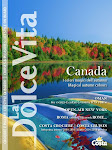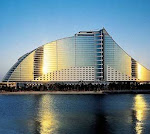It is a beautiful island, with a constant spring climate that attracts tourists all year round. It has wild and harmonious vegetation, jagged coastlines and enthralling, breathtaking panoramas.
Funchal is the capital of Madeira and houses, with 125.000 inhabitants, almost half of the total population of the island.
The port of Funchal was in the past an important disembarkation place for all the ships that were sailing for India and Brazil. A little farther you will see the Marina, a tourist port always crowded with tourists and islanders. Here, in several little restaurants you will be able to try delicious fish specialities. A curiosity: the yacht that is landlocked on the beach belonged to the Beatles.
Behind the tourist port you can admire the most ancient fortress in Funchal: the Fortaleza de Sao Lourenco. In 1540 they built the façade towards the sea. Walls, bulwarks and cannons protected it. But, after the attack of the French pirates who were informed by a traitor of the existence of an unprotected side of the fortress, it was enlarged and reinforced. On the eastern tower you can see the royal crest and the Cross of the Knights of Christ the symbol of the naval power of Portugal.
The cathedral of Funchal is called Sé, the seat of the bishop. It was built in 1514 and has up until today remained unaltered Its severe architecture is softened by some elements in Manuelina style that were added when this form of art was fashionable in Portugal. Inside the inlaid wooden ceiling is of unparalleled beauty. The Arab craftsmen used Madeira cedar wood and decorated it with ebony ornaments. The altarpiece of the main altar and the seat of the choir are in Manuelina style while the side chapels are Baroque.
One of the most interesting squares of Funchal is Praca Colombo. In the centre of the square you will see a mosaic of great value that represented the crest of the city.
In this area you can also find an unusual museum: the Electricity Museum. If you visit it you can look back over the history of electrification in Madeira. Here you will also find the first generator of the old power plant. Through the combustion of coal bearing rocks it produced the necessary steam to make it work.
The Igreja do Colegio, that was built by the Jesuits in the VXII century, has four marble statues on its façade. One of these represents the founder of the order, Ignazio of Loyola.
In the upper city you can find the Convent and the Church of Santa Clara. The first was built at the end of the XV century and housed the Clarisse Order. Soon the convent became one of the biggest landowners of the island thanks to the generous donations of the rich families of Madeira who made their daughters take vows as cloistered nuns. The last Clarissa died in 1890 and the Franciscans took over the Convent. They belonged to an order that was more open to the outside world, and they built a kindergarten and a school to train the overseas missionaries.
At the beginning the Church was in gothic style, but it was restored in the baroque age. This is why the external covering is made of blue, yellow and white Azulejos that give it an oriental aspect.
On the highest part of the city you will see the Fortaleza do Pico. It was built in the1600’s on three levels that were independent and could be protected separately,and it represented the last bulwark to protect the city against pirates.
THE MADERA
The first settlers, who arrived in Madeira around the year 1420, planted the vines on the volcanic land that was rich in iron and other minerals. They quickly obtained excellent cultivation that in no time spread all over the island. Already in the 1700’s this wine was famous not only in Europe but also in America. Let's not forget that President Thomas Jefferson (1743-1826), raised a glass of Madeira to toast the independence of the United states of America! It is certainly a wine that can be enjoyed at the end of a meal or with some cheese even if, on the island, it is often served as an aperitif. Its alcohol content ranges from 19 and 22%, and is subject to severe production laws. It is in fact classified according to the vine, the sugar content, the quantity of alcohol that is added, the ageing and the kind of wood used for the vats. According to this classification the following wines are produced: Madera Tinto (Red) young, sweet and with a rich colour, Tinto Aloirado (Ruby) aged for few years and fruity in taste, or Aloirado (golden) aged longer, demi-sec and sweet. And then Aloirado-Claro (Blond), the one that ages longer in the vats. It is at its best and can be dry or extra dry.














No comments:
Post a Comment